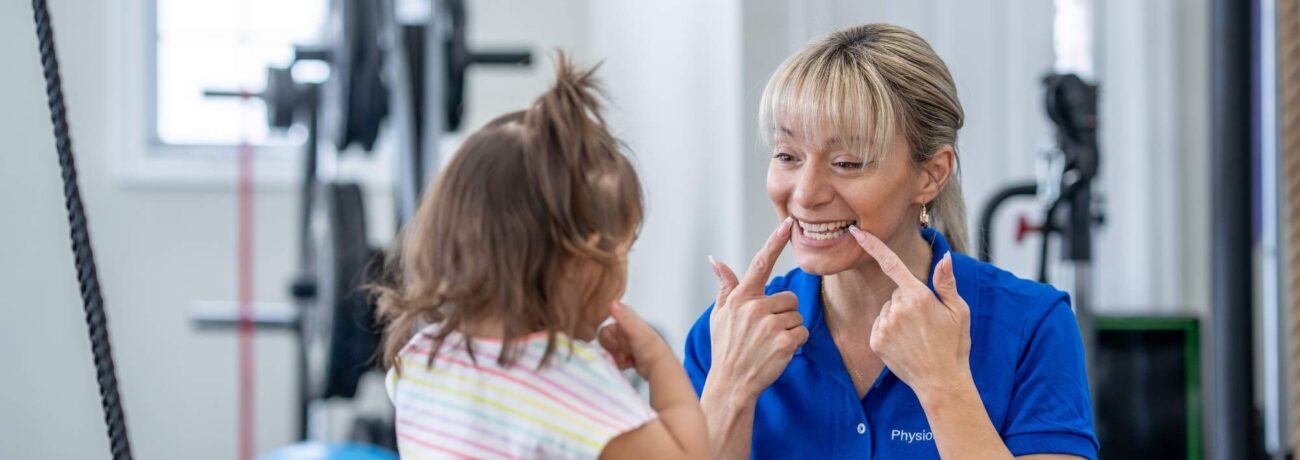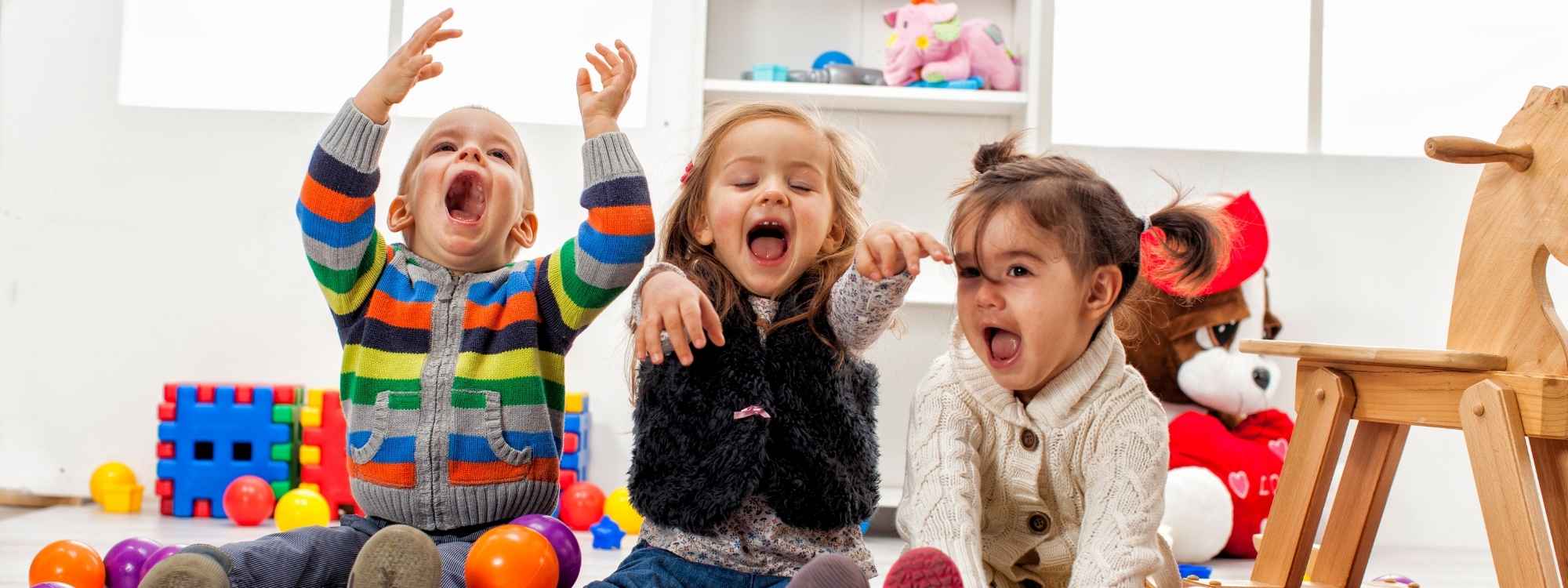Autism Speech Therapy Goals: What Parents Should Know
For many parents, one of the biggest questions after a child is diagnosed with autism spectrum disorder is how to support their communication development. Autism speech therapy goals are designed to provide clear, measurable targets that help children build communication skills, whether through spoken language, gestures, or alternative communication methods. These goals are more than words on a page; they create a roadmap for meaningful progress in everyday life.
At Champions ABA, we understand that every child’s communication journey is unique. That’s why our programs in Connecticut, Massachusetts, and Colorado integrate speech therapy goals into personalized ABA plans, giving children opportunities to practice communication in real-life routines at home, school, and in the community. If you’re ready to begin setting goals that make a difference, contact Champions ABA today to schedule a diagnostic evaluation.
What Are Autism Speech Therapy Goals?
Autism speech therapy goals are individualized objectives created to improve a child’s ability to communicate effectively and confidently. These goals may focus on spoken language, receptive language skills, pragmatic or social communication, or alternative methods like the Picture Exchange Communication System (PECS) or speech-generating devices.
The ultimate aim of these goals is functional communication, teaching children how to ask for what they need, share ideas, and connect with others. For some children, this means learning to form sentences and answer questions. For others, it may involve developing the ability to use gestures, sign language, or AAC devices to participate in social interactions.
Effective speech therapy goals take into account a child’s current communication abilities, their strengths, and the environments where they communicate most often. They are typically written by a speech-language pathologist (SLP) and can be part of an Individualized Education Program (IEP) or included in therapy sessions outside of school.
Core Categories of Speech Therapy Goals
While every plan is unique, most autism speech therapy goals fall into a few core categories. Each category addresses a different but equally important aspect of communication development.
Expressive Language Goals
Expressive language goals help children learn how to communicate their thoughts, needs, and feelings. This may involve building vocabulary, forming phrases, or using longer sentences. For example, a measurable goal might be: “Child will use 3-word phrases to request preferred items in 4 out of 5 opportunities.” These goals are essential because they give children the ability to express themselves in ways others can understand.
Receptive Language Goals
Receptive language refers to how well a child understands spoken language. Goals in this category may include following directions, answering yes/no or WH-questions, or identifying objects and actions. An example goal could be: “Child will follow 2-step directions with 80% accuracy across three sessions.” Improving receptive skills ensures that children can process and respond to communication from teachers, parents, and peers.
Social/Pragmatic Communication Goals
Social communication, or pragmatic language, is often challenging for children on the autism spectrum. Goals in this area may target turn-taking, greetings, conversational exchanges, or interpreting nonverbal cues like body language and facial expressions. A common goal is: “Child will maintain a conversational topic for at least three turns with a peer in a structured setting.” These goals support meaningful social interactions and relationship-building.
Nonverbal and AAC Goals
For children who are nonverbal or minimally verbal, alternative communication methods are critical. Goals may involve learning to exchange picture cards using PECS, using sign language for common requests, or independently operating an AAC device. For instance, “Child will use PECS to request five different items during snack time with 90% accuracy.” These goals ensure every child has a reliable way to communicate.
Champions ABA’s Parent Training program equips families in Connecticut, Massachusetts, and Colorado with strategies to practice these goals at home, ensuring progress doesn’t stop at the clinic or classroom.
How Speech Therapy Goals Are Written and Measured
Speech therapy goals must be both individualized and measurable. Most SLPs and special education teachers follow the SMART framework: Specific, Measurable, Achievable, Relevant, and Time-bound. This format ensures goals are clear and progress can be tracked over time.
Here are examples of SMART goals across categories:
| Goal Type | Example SMART Goal |
|---|---|
| Expressive | “Child will use 3-word phrases to request items in 4/5 trials across 2 consecutive weeks.” |
| Receptive | “Child will follow 2-step directions with 80% accuracy in 3 sessions.” |
| Social/Pragmatic | “Child will take 3 conversational turns with peers during structured play in 4/5 opportunities.” |
| AAC/Nonverbal | “Child will exchange picture cards to request basic needs in 80% of daily routines.” |
Tracking these goals requires ongoing assessment and data collection. Parents may be asked to reinforce skills at home, while therapists provide regular updates during IEP meetings or therapy sessions.
Progression of Speech Therapy Goals
Speech therapy goals for autism are not static. They evolve as a child grows and develops new skills. Progression typically follows three levels:
- Emerging: A child begins learning the skill with heavy prompting or support. For example, pointing to a desired object when given a model.
- Developing: The child can demonstrate the skill with reduced prompting. For example, independently using a picture card to request a snack.
- Generalizing: The child consistently uses the skill across settings, such as requesting help at home, at school, and in the community without prompts.
This progression highlights the importance of ongoing assessment and goal adjustments. At Champions ABA, therapists integrate speech goals into In-Home ABA sessions, helping children generalize communication skills during meals, playtime, and daily routines.
How ABA and Speech Therapy Work Together
ABA therapy and speech therapy often work hand-in-hand to support communication development in autistic children. ABA focuses on behavior and skill acquisition, while speech therapy targets language and communication. When combined, they reinforce one another.
For example, ABA therapists may use functional communication training (FCT) to reduce problem behaviors by teaching children to request their needs appropriately. Speech therapists then expand those requests into more complex language goals. Together, the two approaches build a stronger foundation for communication.
At Champions ABA, collaboration between ABA teams and SLPs is central to our model. Families in Connecticut, Massachusetts, and Colorado can access Diagnostic Evaluations to determine the right mix of ABA and speech support. Our evaluations provide a roadmap that ensures your child’s goals are both achievable and impactful.
Real-Life Example of Speech Therapy Goals in Action
Imagine a therapy session focused on a simple but meaningful goal: requesting a snack.
- Step 1: The therapist presents two options (apple slices and crackers).
- Step 2: Using PECS, the child selects the picture of the preferred snack.
- Step 3: The therapist provides the snack immediately, reinforcing the communication.
- Step 4: Over time, the goal progresses from picture exchange to verbal requests like “I want crackers.”
Through this process, the child learns functional communication that reduces frustration and builds independence. With Center-Based ABA programs at Champions ABA, children practice these same goals in structured environments, preparing them to generalize communication across school and community settings.
Conclusion
Autism speech therapy goals are powerful tools that give children direction, structure, and opportunities to develop communication skills that impact every part of their lives. From expressive and receptive language to social interactions and AAC, these goals ensure that every child has a voice.
At Champions ABA, we combine the expertise of ABA therapy, parent training, and diagnostic evaluations to create speech therapy goals that are measurable, meaningful, and individualized. Families in Connecticut, Massachusetts, and Colorado can count on us to provide targeted support in homes, centers, and communities. Contact Champions ABA today to schedule a diagnostic evaluation and start setting speech therapy goals that help your child thrive.
FAQs
What are examples of speech therapy goals for autism?
Examples include using 3-word phrases to request items, following 2-step directions, maintaining a conversational turn, or using PECS to request basic needs. Goals are always individualized to the child’s communication abilities.
Do all autistic kids have speech delay?
Not all autistic children experience speech delays. Some may develop spoken language on time but struggle with social or pragmatic communication skills, such as understanding facial expressions or maintaining conversations.
Can an autistic child speak normally?
Yes, many autistic children can speak fluently. However, they may still face challenges with social communication, body language, or understanding abstract language. Therapy goals address both speech and pragmatic skills to support effective communication.
How to help an autistic child with speech delay?
Parents can help by modeling language during daily routines, reading interactive books, and encouraging turn-taking games. Professional support through Champions ABA’s diagnostic evaluations and therapy programs in CT, MA, and CO provides structured guidance for progress.



